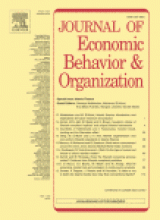
Abstract
This paper offers a behavioral perspective on why Islamic capital markets are dominated by those financial instruments that almost replicate conventional financial products (i.e. Islamic debt bonds and Islamic equities). In contrast, the original Islamic instruments involving risk and return sharing (Musharakah) have failed to emerge. This paper argues that before the replicas, an investor's choice was simply between Islamic and non-Islamic instruments. Along with risk and return, compliance with Islamic principles or Shariah was an integral part of investor utility. As Shariah standards came to give legitimacy to other financial structures, the investors could then choose between various Islamic replicas and the original Islamic instruments. We argue that once the investor's intrinsic need for Shariah compliance is fulfilled, an instrument's risk-return features would become more important. So for loss averse investors with shorter evaluation periods, the loss sharing feature of the Islamic risk and return instruments (Musharkah) makes them less attractive than Islamic debt bonds. For longer evaluation periods, Islamic equities are also shown to outperform the risk and return (Musharakah) instruments. Using the S&P Islamic bond index for bond data and the Dow Jones Islamic Market World Index for Islamic equities, we confirm these views about investor utility by way of both loss aversion and habit based consumption models. The findings suggest that Islamic debt bonds and Islamic equities have been allowed to jointly crowd out the original Islamic risk and return (Musharakah) instruments.
Keywords
Islamic instrument, Investor behavior
